androidwear
Latest

Google Wear OS at five: Older, wiser, but unpolished
Half a decade has passed since Android Wear debuted. During that time, we've seen in-screen fingerprint readers, rollable TVs, self-driving cars, super-smart AI, phones with folding screens and more. In the midst of all that technological advancement, Android Wear has remained relatively unchanged. In its five years, Google's OS has grown smarter and more useful and has even undergone a serious makeover. But the system, now known as Wear OS, still doesn't feel fully matured.

Misfit's $250 Vapor 2 smartwatch adds GPS and NFC
Misfit's Vapor 2 touchscreen smartwatch is ready to join the company's line of fashionable fitness trackers. Unlike the original, the Wear OS-powered Vapor 2 will be equipped with GPS and NFC, making it appealing for those who like the option of leaving their phone at home during workouts. Misfit also upgraded the smartwatch's optical heart sensor which tracks active and resting heart rates.

Spotify releases official, and much-needed, app for Google's Wear OS
You'll now be able to bring your music volume down to one percent (when ads start) without having to take out your phone, as Spotify has announced a new app for Google Wear OS. That's not to say there was never a Spotify app for Android wearables. A Spotify app did launch for Android wear, but wasn't regularly updated. It got to the point that third-party apps were being released to give Android wear fans a more usable Spotify experience.

Wear OS review: Google puts usability first
It may be time to give smartwatches another chance. Companies like Apple, Qualcomm, Samsung and Fitbit have kept trying to make these devices actually useful, and the industry seems to be gaining momentum. Google is rolling out the latest iteration of Wear OS, and its continued efforts seem like they're starting to pay off. This third major release of the OS offers a more proactive Assistant and puts more emphasis on health-tracking, making it a platform that you'll actually want to keep on your wrist.

Skagen's new smartwatch might be The One
It felt like I had found my match on smartwatch Tinder. I hadn't even seen the Skagen Falster 2 in person before today, but I was already enthralled by the pictures. The stunning watch teases with its clean, minimalist design, and then grabs you by your eyeballs with its metallic accents and magnetic mesh band. After meeting it at last here at IFA 2018, I think I'm in lust. Just look at this thing.

Google's Wear OS no longer feels like Android on a smartwatch
Google is ready to unveil a shiny new version of Wear OS at last. This is the third major release of the platform (the first since rebranding to Wear OS), and Google finally shows an understanding that what people want from a smartwatch is not a phone replacement. They want a reliable daily assistant and coach that is fast and unobtrusive. The new system doesn't have obvious battery life enhancements, though, which is still a major pain that the industry has yet to solve. It may be up to Google's partners to figure that out for themselves.

Qualcomm invites us to see its new Wear OS chip on September 10th
Even as wearable devices have become more popular, the hardware backing many Wear OS (formerly known as Android Wear) devices hasn't seen an update since Qualcomm's 2100 SOC arrived in 2016. Now, as promised, a new chip will be unveiled later this year, and this afternoon Qualcomm invited journalists to a reveal event scheduled for September 10th. The invite only had a small smartwatch diagram and the words "It's Time," but Wareable's interview with exec Pankaj Kedia already gave us some ideas about what to expect. The new hardware will be built from the ground up for a wearable device, instead of trying to shrink smartphone technology, and should improve battery life. Plus, it will allow for smaller devices so that everyone can enjoy more stylish options. The big question, of course, is if we'll see the first smartwatches packing Qualcomm's new hardware at the event, like perhaps a Pixel Watch from Google?
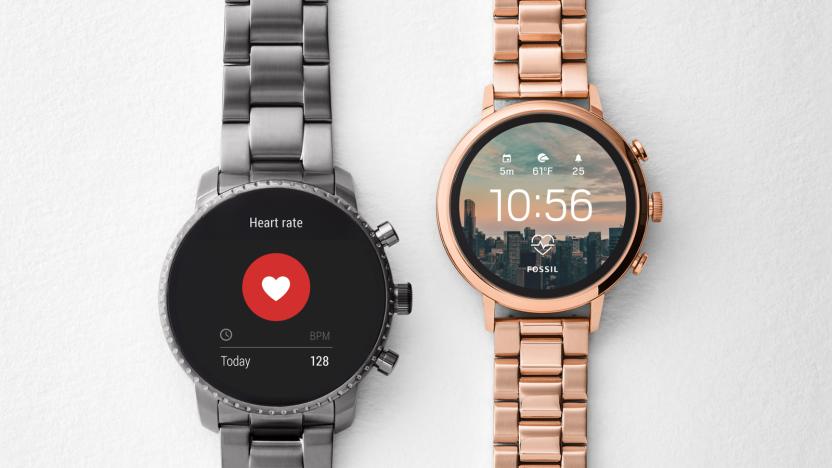
Fossil's new smartwatches get NFC payments and heart rate tracking
Fossil's newest smartwatches come with features many of their predecessors were sorely lacking. In an attempt to catch up to its rivals, the company has added heart rate trackers, NFC payment and built-in GPS to its latest Wear OS models. The Fossil Q Venture HR and Fossil Q Explorist HR can track your heart rate across multiple types of workouts using Google Fit and even have watchfaces that can display beats-per-minute for easy access.

The 'dual-screen' Ticwatch Pro costs $250
For years, smartwatch makers have struggled to make batteries that last longer than two days -- whether it's by adding ultra low power modes or using your body heat. AI company Mobvoi's approach is to develop a new type of display that sips energy, so that it can last up to 30 days. The technology debuts in the Ticwatch Pro, which is now available on Amazon's Exclusives program, and only for Prime members through August 15th. For $250, the Ticwatch Pro offers an impressive array of features, including the battery-maximizing screen.
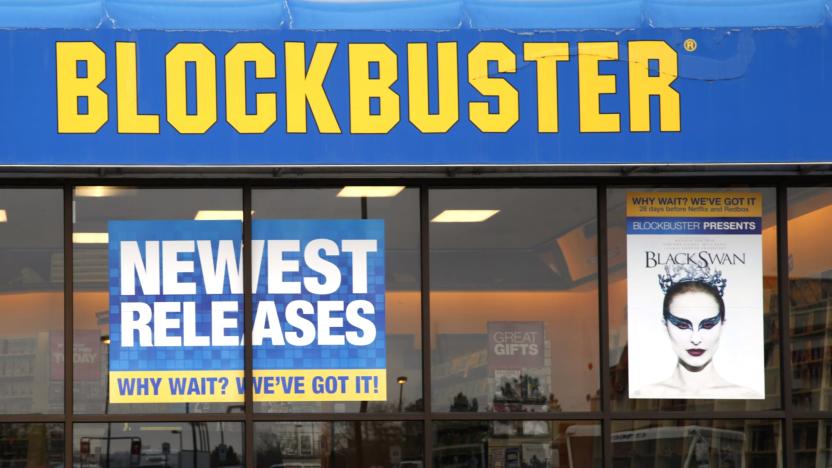
This day in Engadget history: Blockbuster Video tanks in a big way
Engadget has been around for 14 years and counting, which means our archives contain a veritable treasure trove of technology history. From notable reviews and news to the more mundane or ridiculous finds from across the internet, there's a lot to explore here. "This Day in Engadget History" will take you on a historical voyage as we look at what made the headlines in years past. Join us, won't you?
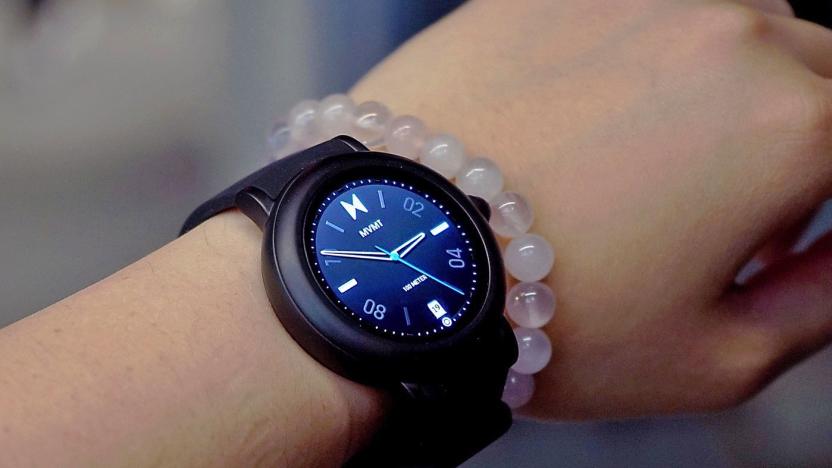
Wear OS watches get (slightly) useful interactive faces
Look at all that space on your smartwatch's face. You could be doing so much more with it. In addition to simply displaying the time, date, current weather and your fitness progress, your watch's canvas could also do things like launch apps, switch modes or even let you play mini games. That is, if you're using an Android Wear, sorry, Wear OS, device. You'll have to install the Facer app and make sure you have the latest version (4.6.0) to get the new interactive faces, which launched today.
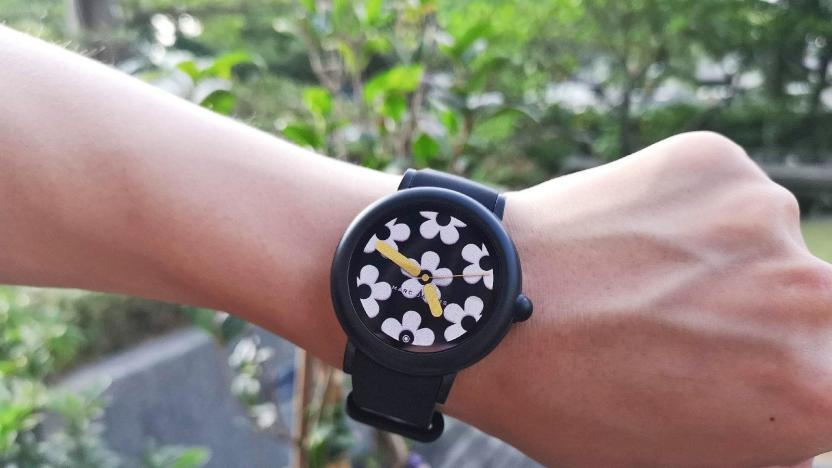
Marc Jacobs is (un)fashionably late with its first touchscreen watch
At this point in the smartwatch game, it's hard to get excited about yet another Android Wear -- sorry, Wear OS -- device. But that's not stopping Marc Jacobs from showing up fashionably late to the party. The designer's new Riley smartwatch ($295) is its first with a touchscreen display and runs Wear OS. It has a somewhat chunky round case with one button instead of the three that adorned the side of its hybrid sibling released last year, which was based on the company's existing Riley analog timepiece.
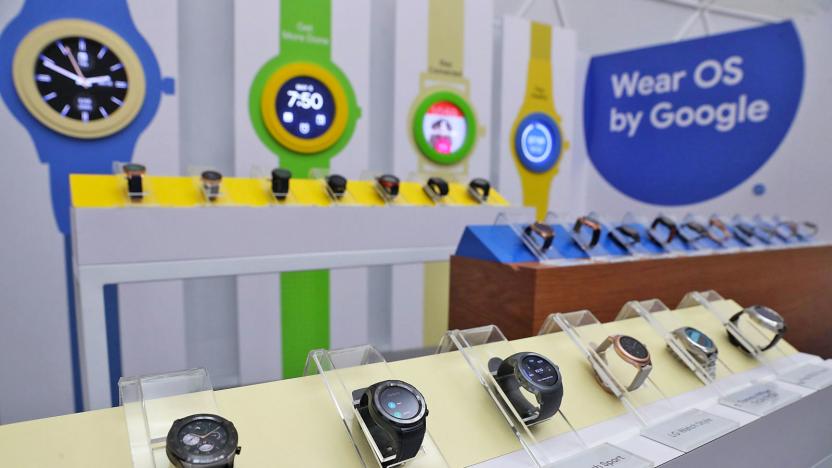
Google is rumored to be working on a Pixel smartwatch
Google could launch up to three Pixel smartwatches this fall, according to leak-meister Evan Blass and German tech site, Winfuture. The devices would likely use Qualcomm's upcoming wearable-dedicated chip, which it designed in close collaboration with Google. It promises to slim down watch designs, extend battery life and come with built-in features like a GPS, LTE, WiFi and a heart-rate sensor.

Qualcomm is finally releasing a new smartwatch chip
It's been two years since Qualcomm released its latest smartwatch chip, so the company can't blame people for thinking that it already abandoned the market. Apparently, though, that's not the case: Qualcomm's senior director of wearables, Pankaj Kedia, told Wareable that the company is launching a new smartwatch system on a chip (SoC) this fall. Come holiday season, several manufacturers will already have Wear OS smartwatches wielding the power of the new chip available for sale.

Google adds more Assistant features to Wear OS
Google brought its AI assistant to Android Wear 2.0 last year, and has been adding features like Routines and Custom Device Actions ever since. Now the company is bringing a few new features to Assistant on Wear OS (as it's now called), including contextually aware conversation suggestions, auditory answers to your questions and actions for connected devices.

Google rebrands Android Wear as Wear OS
Android Wear, Google's big attempt to get into the wearables space, hasn't been the runaway blockbuster hit the company had banked on. In order to give the platform a much-needed shot in the arm, the company has sought to rebrand the software as Wear OS by Google.
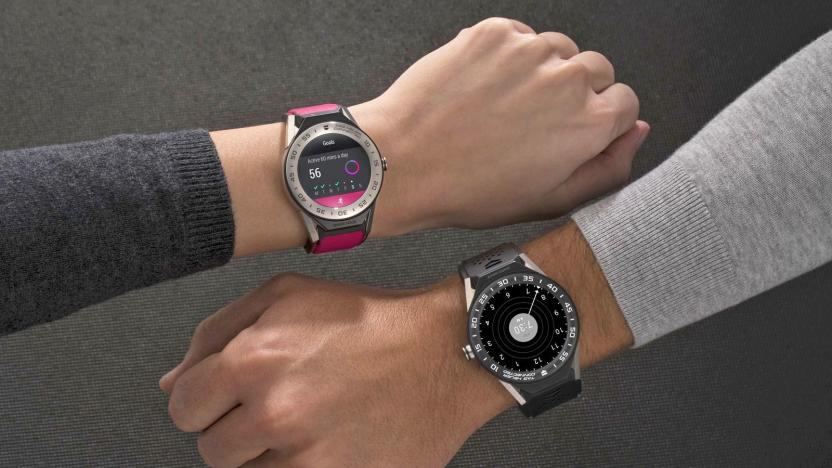
Google hints at a rebranding for Android Wear
Android Wear might be on the cusp of a Google Pay-style rebranding. Users exploring the latest Android P Developer Preview have noticed that Google is not only referring to Android Wear as "Wear OS," but has replaced the usual watch-like logo with a distinctive "W." This doesn't necessarily indicate that a formal name change is imminent (9to5Google noted that Play Services betas alluded to Google Pay for months), but it does suggest it could happen by the time Android P is released, if not by the Google I/O conference in May.
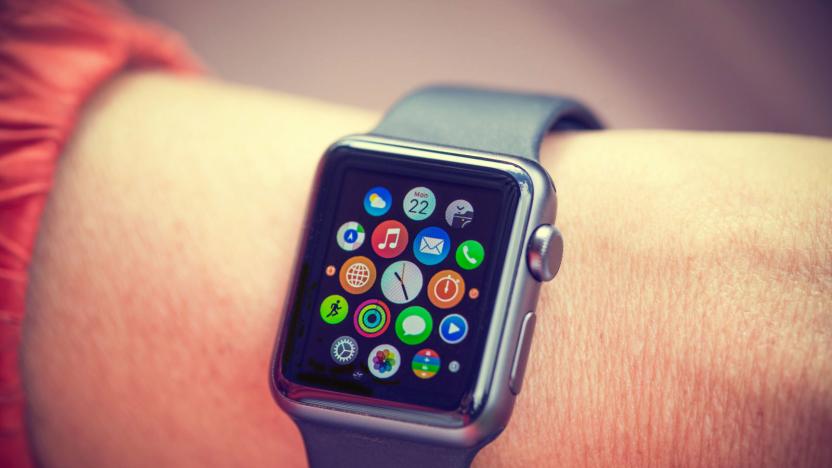
So you bought a smartwatch. Now what?
Now that smartwatches are actually useful enough for the general populace, setting them up isn't as pedestrian a task as pairing with your phone and calling it a day. On the surface, customizing your new device may not seem like a complicated task, but people often overlook some of the tools that can potentially make wearables more helpful. From recommended settings to the apps worth downloading, here's a walkthrough of what you should look out for when setting up your new wearable.
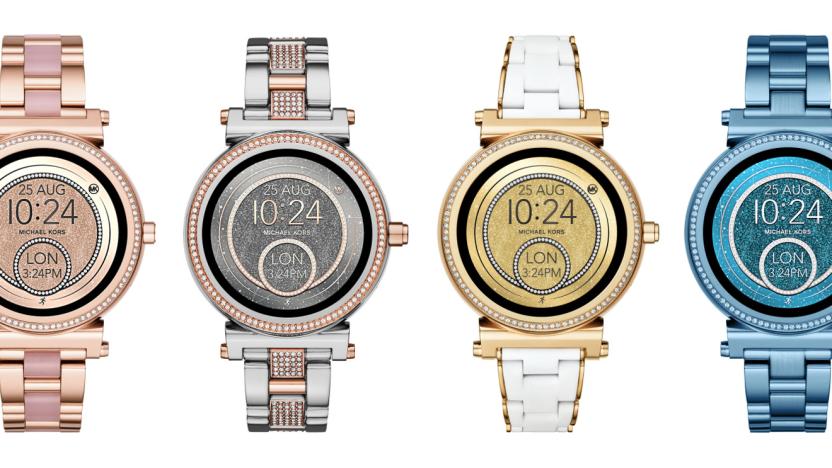
Michael Kors offers Android Wear smartwatches in more colors
Fossil introduced a plethora of smartwatches across its brands last year, including quite a few options under the Michael Kors Access line. Now, MK is giving you even more choices by releasing new Sofie and Grayson Android Wear 2.0 watch colors as part of its Spring 2018 collection. The MK Access smartwatches both have access to Google Assistant, have customizable faces and can track activity. Both devices will get My Social, the microapp that connects the smartwatch to your Instagram or Facebook account, so you can use photos there as watchfaces. MK will also roll out a new microapp called My Next in January, which you can use to start a countdown on the device to an important event like birthdays or anniversaries.

How to buy a smartwatch in 2018
The smartwatch industry's identity crisis may be coming to an end. Familiar tech brands like Motorola, Microsoft and Pebble have retired from making wearables, while others like ASUS are rumored to be giving up on the category, leaving us with a shrinking selection of devices to choose from. But fitness and fashion brands have rushed to fill the vacuum, while more specialized watches are also on the rise. This means shoppers will need to prioritize some features over others. As it turns out, there's not yet a perfect solution.








